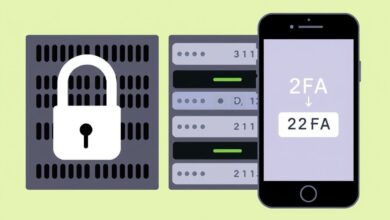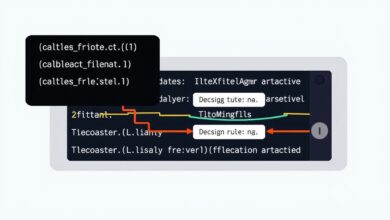Understanding Intrusion Detection Systems (IDS) for Servers: Your First Line of Defense

In today’s complex digital landscape, servers are the backbone of most business operations, storing critical data and running essential applications. Protecting these assets is paramount. This is where Intrusion Detection Systems for Servers come into play. But what exactly are they, and why are they so vital for server security?
An Intrusion Detection System (IDS), at its core, is a security technology – it can be a hardware device or a software application – designed to monitor network or system activities for malicious actions or policy violations. Think of it as a vigilant security guard for your server environment, constantly watching for signs of trouble. Its primary function isn’t necessarily to stop attacks (that’s more the role of an Intrusion Prevention System, or IPS), but to detect suspicious activities and alert administrators, allowing for timely investigation and response.
How Do Intrusion Detection Systems Work on Servers?
IDS solutions tailored for servers employ various methods to monitor and analyze activity. They scrutinize network traffic flowing to and from the server, examine system logs for unusual entries, monitor critical system file changes, and check for known attack patterns or deviations from normal behavior. The goal is to identify potential threats before they can cause significant damage.
There are two main categories of IDS particularly relevant to server protection:
- Network-based Intrusion Detection Systems (NIDS): These systems are placed at strategic points within the network, often just in front of the servers they protect. They capture and analyze all network traffic passing through that point, looking for malicious patterns or anomalies in the data packets destined for the server.
- Host-based Intrusion Detection Systems (HIDS): HIDS are installed directly on the server they are intended to protect. They monitor activities *within* that specific server, such as system calls, application logs, file system modifications (e.g., changes to critical configuration files), and user login activity. HIDS provide granular visibility into what’s happening on the server itself.
Detection Methods: Signatures vs. Anomalies
Regardless of whether it’s NIDS or HIDS, the detection engine typically uses one or both of the following methods:
- Signature-based Detection: This method works like antivirus software. The IDS maintains a database of known attack patterns or “signatures.” It compares monitored activity against this database. A match triggers an alert. This is effective against known threats but ineffective against new, zero-day attacks.
- Anomaly-based Detection: This approach first establishes a baseline of “normal” server or network behavior. It then monitors activity, looking for deviations from this baseline. Anything significantly different could indicate an intrusion attempt. This method can potentially detect novel attacks but can also be prone to generating false positives if the baseline isn’t well-defined or if legitimate activity changes significantly.
Why Are Dedicated Intrusion Detection Systems for Servers Crucial?
Servers face a unique set of threats compared to standard workstations. They often host web applications, databases, email services, and file shares – all attractive targets for attackers. Common threats include:
- SQL Injection attacks targeting databases
- Cross-Site Scripting (XSS) targeting web applications
- Attempts to exploit vulnerabilities in server software (OS, webserver, applications)
- Brute-force login attempts
- Installation of rootkits or backdoors for persistent access
- Data exfiltration attempts
An IDS specifically configured for a server environment can be tuned to detect these specific types of malicious activities. HIDS, in particular, excel at detecting unauthorized changes or processes running directly on the server, which might be missed by a purely network-based approach. According to recent cybersecurity reports, attacks targeting server infrastructure remain a significant concern for organizations globally. Having robust detection mechanisms is no longer optional. For more insights into current threat landscapes, resources like the OWASP Top Ten provide valuable context on web application vulnerabilities often targeting servers.
Key Considerations When Implementing Server IDS
Implementing Intrusion Detection Systems for Servers requires careful planning:
- Performance Impact: HIDS, in particular, consume server resources (CPU, memory). It’s crucial to choose a solution that balances security effectiveness with minimal performance overhead.
- False Positives/Negatives: Tuning the IDS is essential. Too sensitive, and you’ll be overwhelmed with false alarms (false positives). Not sensitive enough, and you might miss real threats (false negatives).
- Alert Management: A clear process for handling IDS alerts is necessary. Who receives the alerts? How are they investigated? What’s the escalation procedure?
- Integration: Ideally, the IDS should integrate with other security tools, like firewalls, SIEM (Security Information and Event Management) systems, and potentially IPS for automated response actions. Learn more about integrating security tools here.
- Maintenance: Signature databases need regular updates, and anomaly detection baselines may need periodic retraining.
Conclusion: Proactive Server Protection
Intrusion Detection Systems are a fundamental component of a layered server security strategy. Whether using NIDS to monitor traffic entering the server’s network segment or HIDS to watch over the server’s internal state, these systems provide critical visibility into potential threats. By detecting malicious activity early, Intrusion Detection Systems for Servers empower administrators to respond swiftly, mitigating potential damage and helping to ensure the integrity, confidentiality, and availability of vital server resources. Don’t leave your servers vulnerable; consider implementing an IDS solution today.




